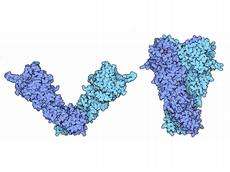How environmental effects regulate genes

Swiss researchers provide evidence that a protein in the cell nucleus responds to environmental stimuli like a kind of sensor, regulates genes accordingly and thus exchanges information with the cell memory. And that’s not all: cancer drugs that are currently being tested inhibit precisely this protein – and, thanks to new findings, soon maybe even more specifically.
If we get too hot, our body responds: it increases the blood flow to the skin so that more heat can be transported outwards and released. It sweats to cool us down through evaporation. However, inside the body a kind of SOS program is launched: in the cells, a large number of heat-shock proteins are formed very quickly. These act as so-called chaperones to help other proteins to retain their three-dimensional shape. This is important as only a protein that is “folded” correctly, as it is called in the jargon, can also work correctly in the cell. Without the help of the chaperones, many proteins would clump under increased temperatures and become useless.
Involvement in gene regulation
One of these chaperones is the heat-shock protein 90, or Hsp90 for short. Hsp90 is extremely versatile and, apart from its chaperone role, is known to have other vital functions in the cells of most living organisms. Until now, however, it is primarily its functions in the cytoplasm, outside the cell nucleus in other words, which had been investigated.
Researchers from the epigenetics group headed by Renato Paro, a professor of biosystems at the Department of Biosystems Science and Engineering (D-BSSE), have now demonstrated that Hsp90 also plays a key role in the cell nucleus – the regulatory centre of the cell where the genetic material is stored and copied.
Surprisingly, Hsp90 is also directly involved in gene regulation there. This means it has a say in which genes are copied and translated into proteins or not – especially in stress situations, such as when temperatures rise above the comfort level.
An antenna for environmental influences
With the aid of state-of-the-art high-throughput sequencing technology and thanks to the interdisciplinary collaboration between biologists and biostatisticians, Paro’s team was able to demonstrate on fruit flies and human cells that Hsp90 sits on the transcriptional machinery at the start of many genes. The machinery waits for a signal from outside in order to be launched and copy the gene so that the transcript can subsequently be translated into proteins as quickly as possible.
In doing so, Hsp90 acts as a sensor that registers the signal from the environment. If it gets too warm, Hps90 “notices”. It detaches itself from the machinery it has been keeping under control thus far and activates it. The result: proteins that the cell needs in heat stress are formed in greater quantities – and very quickly at that, including Hsp90 itself.
The link to the cell memory
Previously, researchers assumed that cells return to normal operations again after the stress has been overcome and carry on working as if nothing happened. However, epigeneticists know that cells also have a memory. And, according to Paro, “This cell memory has to be linked to environmental influences”. This is the only way a living organism can adapt in any way to its environment.
The gap between environmental influences and cell memory is bridged by Hsp90. The protein also controls genes that respond to stress and are linked to the cells’ memory. Hsp90 thus communicates directly with the cell memory. As a result of stressful environmental influences such as heat shock, in certain circumstances genes can be marked with proteins containing epigenetic flags. These decide how well or less well these genes can be activated in future – in this case, in preparation for potential heat stress later on.
These markings, which codetermine the future gene activity, are passed on to the daughter cells during cell division. And that’s not all: in some cases, they are even inherited by offspring, as earlier experiments conducted by Paro’s group reveal.
New explanation for effect of cancer drugs
Paro’s research results are extremely interesting because promising new cancer drugs that are currently in the clinical test phase inhibit Hsp90.
It was previously assumed that the impact of Hsp90 on cancer with the chaperone function had to have something to do with the cells that had spun out of control; that they were involved in the folding of cancer proteins.
With the new results of Paro’s group, however, the effect of the new drugs might now be interpreted completely differently – that the substances intervene directly in gene regulation through the inhibition of Hsp90 in the cell nucleus.
With a dose of researcher’s luck, the new knowledge can be used to develop drugs against cancer that only act in the case of Hsp90 in the cell nucleus. This could mean the very strong side effects of these drugs nowadays can be reduced, Paro hopes. However, there is still a lot of development work to be done before it reaches that stage.
More information: Sawarkar R, Sievers C and Paro R. Hsp90 globally targets paused RNA polymerase to regulate gene expression in response to environmental stimuli. Cell, Volume 149, Issue 4, 807-818, 11 May 2012. DOI: 10.1016/j.cell.2012.02.061
Journal information: Cell
Provided by ETH Zurich
















